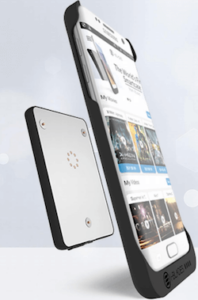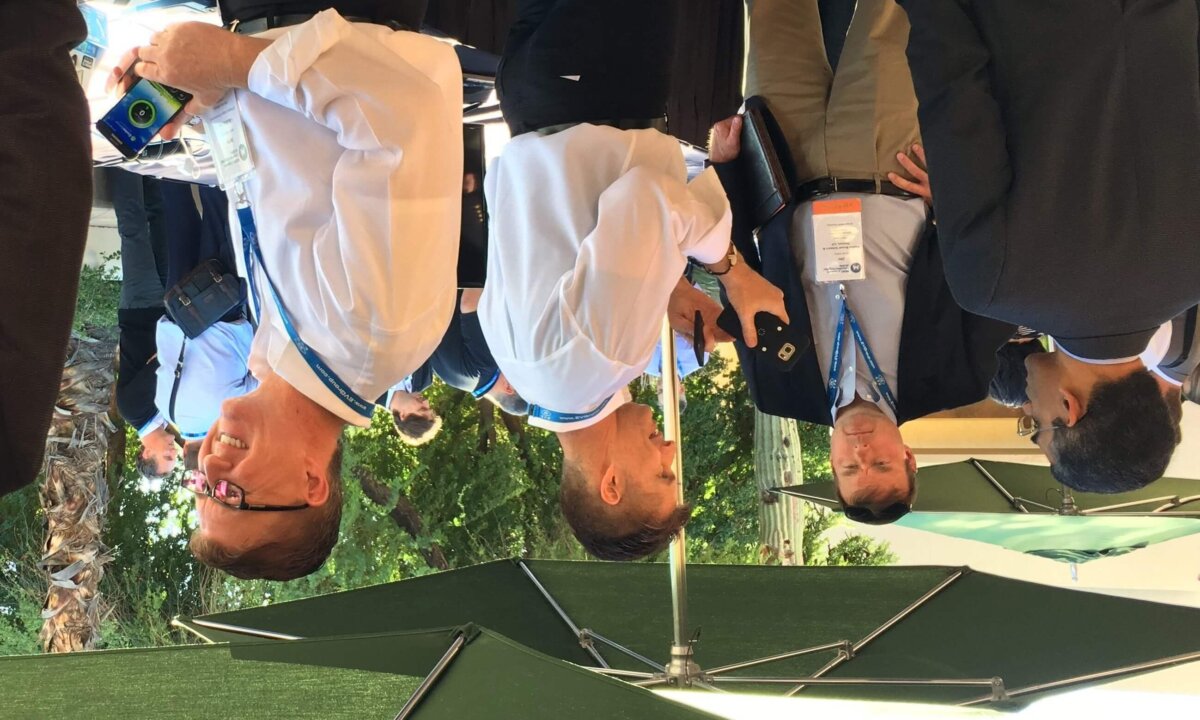A shift has occurred. As MEMS becomes mainstream, the focus of the annual MEMS & Sensors Executive Congress (MEC 2016) was less on MEMS development and more about the fun part: how we put these technologies to work for us. As Stefan Finkbeiner, Bosch Sensor Systems so eloquently put it, “Nobody wants to buy an accelerometer anymore, they want a step counter.” So how do we capture the value from MEMS and sensors? What applications do they enable? How will they change our lives? These were the questions addressed throughout the two-day event, which took place November 9-11 in Scottsdale, AZ.
How do we capture value from MEMS and Sensors?
Cameron Coursey, VP of product development at AT&T IoT Solutions, set the tone with his keynote, the future of Sensors and MEMS in the Internet of Things (IoT, describing the Internet of Things (IoT) as the 4th industrial revolution enabled by MEMS and sensors. The first three (if you’re wondering) were steam/water power in the 1700s, manufacturing in factories in the 1800s, and the computer information age in the 1900s.
One thing all these revolutions shared was the benefit of good timing. “Innovation is a matter of timing. When the idea comes at the same time as technology, great things can come about,” he said, pointing to the example of the invention of the microchip at Texas Instruments coinciding with landing on the moon, as it allowed for a guidance computer to be placed in the rocket’s nose.
With over 30 million connected devices to date, including 10.5 million connected vehicles worldwide, Coursey says IoT is well on its way and will extend beyond smartphones and tablets to anything that can be connected through cellular network subscriptions. AT&T is gearing up to support this “Internet of Countless Things” with its LTE-M secure development platform. (The “M” stands for machine communication.) His message to the MEMS and sensors community is that they too can support this Internet of Countless Things if their devices:
- Follow price, size, and power consumption curves similar to or better than radio technology
- Standardized I/O
- Are simple to integrate and use with applications
Behrooz Abdi, InvenSense, said we are moving towards an era of ambient computing built on performance, power, and size, with sensor rich platforms that won’t just disappear into our mobile phones, such as virtual reality, wearables, gaming, robots, and drones.
Abdi put to rest the assumption that because ICs are “free” so should MEMS be. MEMS aren’t ICs. They require a complex supply chain, have a slow rate of innovation, and require complex solutions. “The IoT economy doesn’t mean putting the Uber app on your watch. It’s much more complicated than that,” he explained. To move up the value chain, we need put processing power on the devices themselves, and leverage the Cloud for infinite power, storage, and connectivity with other data sets. He said we can cut down on latency and power by transferring context, rather than raw data, to the cloud.
What applications do they enable?
Once again this year, I was amazed by the ingenuity displayed during MEC’s annual technology showcase.
Dave Horsley, Chirp Microsystem, demonstrated MEMS ultrasound transducers that allow touch-free interaction with devices, and are ideal for gesture control applications in tablets, wearables, tablets, and smartphones, as well as for various drone and automotive applications. “MEMS-based ultrasound has the potential to be as big a market as inertial sensors,” he said.
Up until now, gesture control capabilities have been based on optical sensors, but Horsley says that ultrasound transducers are low-power and allow for “always on” operation, have a wide operating range, and are 1000x smaller than conventional transducers. Signal processing is performed on the chip and is autonomous from the host device.

Then there was I-Blades, the manufacturer of the world’s first smart case, which adds functionality to smartphones via snap-on modules. Paul Meissner, CEO, presented the latest module: an air quality sensor that measures air pressure, humidity, and volatile organics. The project was a collaborative effort of I-Blades and Bosch Sensortec and allowed Bosch to get its sensor technology into the marketplace quickly without waiting for it to be designed in by a smartphone manufacturer.
Next up was IDT’s Deborah Deininger, who demonstrated a gas sensor for indoor air quality and breath detection. What made this device special was the combination of the sensor with custom, proprietary algorithms, demonstrating how a MEMS technology can be re-purposed for a variety of applications through software. The most interesting of the applications to me was the one that detects acetone on the breath, which is a fat-burning indicator. This app lets you measure what is actually going on inside your body so you can make informed decisions about your fat-loss routine. I say, sign me up!
The most entertaining presentation in the technology showcase was by Valencell’s Ryan Kraudel, who demoed biometric sensor technology implemented in a virtual reality game for the purpose of gathering medically relevant help data for health and wellness applications. “I have to get into a state of meditative breathing to save the Earth,” said Kraudel, explaining how the game works. The sensor technology will be implemented in sports and fitness devices to take people through controlled breathing and meditative breathing exercises.
The final showcase presentation was by Vesper Technologies’ CEO, Matt Crowley, who demonstrated a piezoelectric MEMS microphone designed to displace capacitive sensing MEMS microphones. These little beauties are low noise, insensitive to dust and particles, completely waterproof, and has a wake-on-sound feature, which increases standby time by a factor of 100 over conventional microphones, for which speech recognition requires a lot of power. Crowley says the mic will respond to voice “for years” on a single battery charge.
How will they change our lives?
The question of how MEMS and sensors will affect our lives was, as always, was the most compelling for me as I listened to talk after talk about how MEMS and sensors are changing medical care and treatments, as well as the way we drive, and the way we communicate, and the way we shop. For example:
- Jean-Christophe, Yole Dévéloppement noted that MEMS and sensors will provide more personalized medical care and better disease detection thanks to disruptive medical devices coming to market. There are already reports that two patients with artificial hearts have lived for 2 years.
- Robert Giasolli, Cagent Vascular, said treating arterial disease would be simplified by embedding a permanent device in the body.
- Jérémie Bouchaud says automotive safety mandates in China and India has IHS Markit adjusting its MEMS and sensors forecast upward. He says we will see solid growth for the next ten years, thanks to the ADAS, LIDAR, and the connected car.
- Jari Hokansen, Microvision, says the value in cars is shifting from the chassis and drive train into electronics and sensors, and that as cars become “humongous computers”, half of the value will be in its electronics. He also admitted that despite all this, even as a software engineer, he doesn’t know if he would want a driverless car.
- Philip Rayer, Local Motors, says co-creation is the key to taking products to market rapidly, at a reduced cost. His wishlist from the MEMS and sensors community for his 3D printed cars includes: Get rid of wiring, reduce cost, consolidate sensors, minimize data, reduce complexity, and address security concerns.
From the Fireside Chat with NXP’s Jaime Pla, and Bosch Sensortec’s Stefan Finkbeiner, we learned that as an industry we need to be solutions suppliers, drive new competencies, make sensors more intelligent, and redefine the ecosystem. We need to develop certain standards or leverage existing CMOS capabilities, as well as involve academia when coming up with long-term and novel ideas. Lastly, we need to develop a common language with software and cloud people and develop layers of security that force compartmentalization if information protected by hardware.
Saving the best for last, I found the presentation by Yang Zhao, MEMSIC, to be the most thought-provoking of the two days, as he waxed philosophical about human/machine interactions. He described humanity as the non-linear integration of man and nature through sensing and processing, calling it a “human mesh network” that considers social culture and protocol. In contrast, he noted that the computing network is primitive, but it’s catching up.
“When sensors are merged with humans it will profoundly change our lives,” he said. The question I have is will it really be for the better? According to Zhao, the IoT is a way to make computers come alive and lets them connect with natures the way humans do. He said 2/3 of the human decision factor is based on emotions, and that computers will help humans make decisions. But can the computer network (AI) carry an emotional factor? Do we want it to be emotional? These are the decisions we will be faced with when what was once impossible becomes possible. Just because we can do something, should we? Food for thought, for sure.
I’m sure there’s more from the MEC 2016, but that’s it from me! Already looking forward to what next year’s event will have in store. ~ FvT























